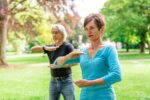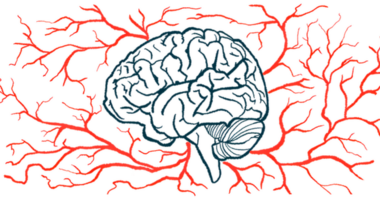Brazilian dance boosts lower limb strength better than other exercises
Clinical trial compared dance to Nordic walking, deep-water exercise

A three-month exercise program focusing on Brazilian dance led to greater gains in lower limb strength among Parkinson’s disease patients than Nordic walking or deep-water exercise programs, according to a clinical trial report.
Most measures of motor performance, cognitive function, and quality of life were unaltered by any of the programs, however. Researchers believe longer-term clinical trials are needed to adequately evaluate their potential benefits for Parkinson’s patients.
The study, “The effects of Brazilian dance, deep-water exercise and nordic walking, pre- and post-12 weeks, on functional-motor and non-motor symptoms in trained PwPD,” was published in the Archives of Gerontology and Geriatrics.
As Parkinson’s disease progresses, the burden of motor and nonmotor symptoms make daily life activities difficult for patients. While Parkinson’s medications help, they often fail to ease all symptoms.
It’s been well established that regular physical activity, tailored to a person’s needs, is a low-cost and effective way to help ease symptoms, improving mobility, cognition, and life quality for patients.
A wide range of types of exercise have shown to be safe, engaging, and beneficial for Parkinson’s patients, including Nordic walking, Brazilian dance, and deep-water exercise.
Comparing three types of exercise
Nordic walking involves walking with poles such as those in cross-country skiing. Thought to promote better brain and muscle activation than regular walking, it’s been associated with improved balance and gait for Parkinson’s patients. Deep-water exercise, where balance and strength exercises are performed in a pool, and traditional forms of Brazilian dance have also been linked to better mobility and life quality for Parkinson’s patients.
Previous studies of these types of exercise have mainly involved sedentary patients, or those who are not routinely physically active, leading scientists here to compare the three regimens among 83 less sedentary Parkinson’s patients, ages 50 and older, who were on stable Parkinson’s medications and could walk independently, with mild to moderate functional disability.
Participants were randomly assigned to take part in a 12-week (three-month) program of either Nordic walking, deep-water exercise, or Brazilian dance. All the interventions involved one-hour, group-based sessions, taken twice weekly. A battery of tests were performed before and after the 12 weeks to evaluate motor function, including measures of motor symptoms, mobility, endurance, muscle strength, and fear of falling.
For most tests, none of the interventions led to significant or clinically meaningful improvements after 12 weeks, but Brazilian dance was associated with significant improvements in the sit-to-stand (STS) test — a measure of lower limb strength — relative to the other two activities. Patients in that group saw significant gains in STS performance after 12 weeks over their pre-intervention performance, whereas Nordic dance or deep-water exercise participants didn’t see any improvements.
The difference could be because the Brazilian dance program involved movements like those in the STS test, whereas the others didn’t.
The test involves standing from a sitting position, then sitting back down again and repeating it five times in a row as fast as possible. The movement was part of the beginning and end of each dance class, according to the scientists.
None of the programs were associated with significant changes in measures of cognition or quality of life.
Despite the lack of significant findings, the scientists emphasized that no change in motor or cognitive symptoms, “can be considered a positive result,” given that Parkinson’s is a progressive disease where function worsens over time. They also said 12 weeks may be too short to see meaningful gains.
“The study findings point to the value of investigating the continuity of these responses over longer periods than that used in this study,” they wrote, noting that twice weekly sessions may have been too light of an exercise load. They said further research should explore “the different responses among [Parkinson’s] subtypes … to advance understanding and tailor interventions for each subgroup.”







